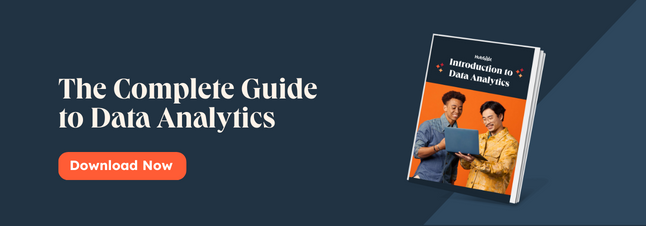The Components of a Good Data Source
A good data source is ...
Original
Whether you’re working with internal or external data, make sure it is always coming from the primary source. If you come across an interesting data set on Wikipedia or in a magazine article, track down the original data. Without reviewing the primary data yourself, you’ll never know if the methods were flawed, the sample size too small, or the questionnaire biased.
And folks ... friends don’t let friends cite Wikipedia. Remember: It's your responsibility to represent the data in as close to its original context as possible.
Comprehensive
If you have questions unanswered by your data, your audience will, too. Your data source should provide enough information to get the big picture as well as any appropriate context. For example, let's say your sales metrics show a significant jump in units sold between April and May -- not too bad!

But looking at the larger set, you see that jump came after a general decline. That’s the full story you want your data to tell.
Current
The world changes quickly. Oftentimes, data that was produced or collected ten years, five years, or even a year ago is obsolete. Always use the most recently published version of the data available. Some data producers, such as the Department of Labor, revise their data on an annual or even monthly basis -- but this is not always the case for every data producer.
Ideally, you'll want your data to be one or two years old at most. Beyond this, use discretion; and in all cases, be upfront about how old the data set is. For example, the graphic below uses data that's a few years old, but they made sure to specify that it's the most recent year available in the bottom left-hand corner.

Reliable
Verify that the source you choose is relevant, legitimate, and as unbiased as possible. Strong sources include data collected/produced by government agencies, such as the statistics compiled by the U.S. Census Bureau or the Department of Labor. Other top-tier data sources can include industry white papers or academic publications.
Remember that surveys conducted by polling agencies or think tanks, while usable, will often have a political agenda. Therefore, as with the case of aged data, use discretion. Avoid data that is anecdotal, user generated, or based on hearsay.
To judge whether or not a source is appropriate, ask yourself the following:
- Who wrote this web page? Does the author have credentials?
- Is this web page affiliated with a credible organization?
- When was the website last updated?
- What is the purpose of the organization that is hosting the website?
- Does the author provide a bibliography?
Where to Find Good Data
Luckily, there are many reliable sources that can give you access to a wealth of data on a variety of subjects. Here are a few to get you started.
General Data/Research
- UNData: A statistical database of all UN data.
- Amazon Public Data Sets: A repository of large data sets relating to biology, chemistry, economics, etc., including the the Human Genome Project.
- Pew Research: Public opinion polls, demographic research, media studies, etc.
Academic Studies/White Papers
- Google Scholar: A wide array of information, including articles, theses, books, abstracts, white papers, court opinions,etc.
Financial Data
- Google Finance: Real-time stock market data.
- Google Public Data Explorer: Searchable large datasets on economic development worldwide.
Government/World Data
- The CIA World Factbook: Global information on history, people, government, economy, geography, communications, transportation, military, etc.
- U.S. Census Bureau: Demographics, geographic information, and education for U.S. population.
- Data.gov: An open data source for U.S. government data.
Social Data
- SocialMention: Real-time social data.
- Google Trends: Explore search data and trends.
- Topsy: Search social trends and tweet history.
Health Data
- Healthdata.gov: Data on Medicaid, Medicare, clincial studies, treatments, etc.
- CDC.gov: Public health data from the Centers for Disease Control & Prevention.
Only when you have good data from a solid source can you craft a credible, informative, and persuasive message.
Marketing Data



![How to Nail First-Party Data Strategy According to a Google Director of Product Management [+ New Data]](https://53.fs1.hubspotusercontent-na1.net/hubfs/53/first-party-data-strategy.webp)

![6 Ways to Earn Trust From Consumers Who Share Data With Your Brand [Data]](https://53.fs1.hubspotusercontent-na1.net/hubfs/53/person%20shares%20data%20with%20brand.png)






![15 Stats Every Digital Publisher Needs to Know [SlideShare]](https://53.fs1.hubspotusercontent-na1.net/hubfs/53/Media/charts.jpg)